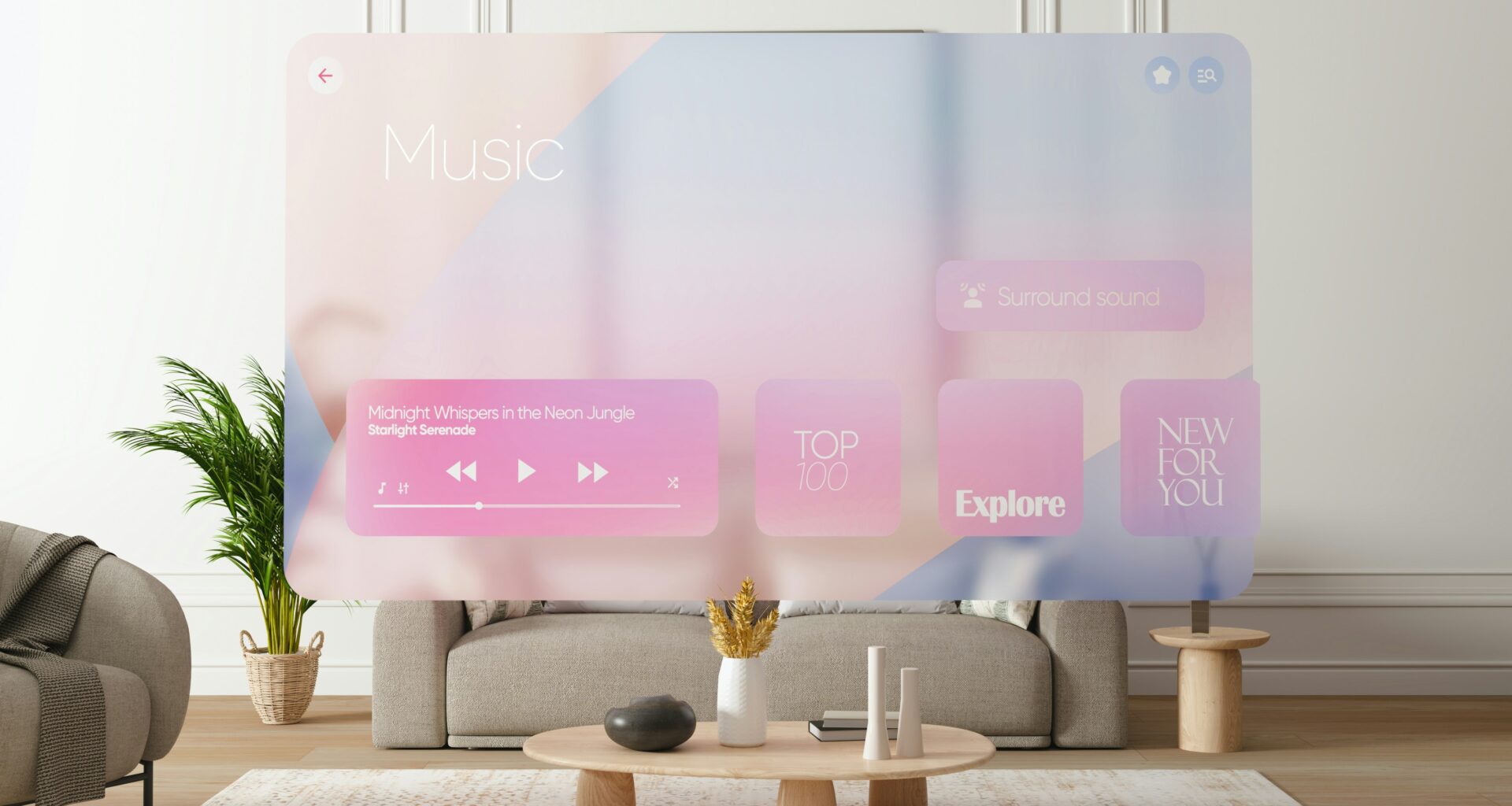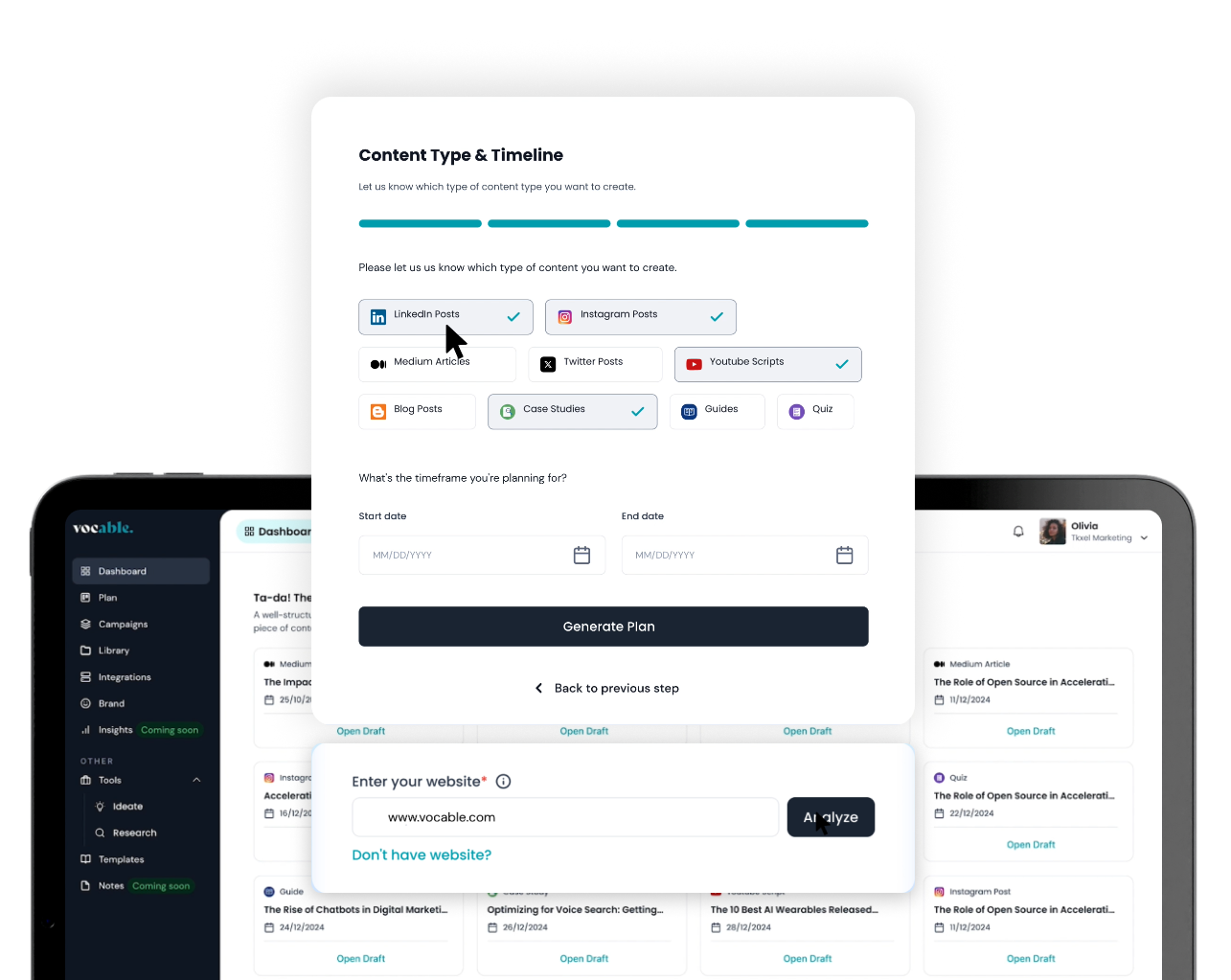25 Creative Content Marketing Ideas for Effective Brand Promotion

Vocable TeamJanuary 10, 2025 4 min read
Have you ever thought about why content marketing is so important today? Here’s the deal: with tough competition and rising consumer expectations, old-school advertising just isn’t enough.
It’s like showing up to a digital fight unprepared. That’s where content marketing comes in to make a real difference.
Here are some quick stats to show how well content marketing works: 73% of B2B and 70% of B2C marketers use content marketing as part of their marketing strategy.
Seeing how important an effective content marketing campaign is, we’re going to give you 25 killer content marketing ideas that you can try out for your next content strategy.
Buckle up, my friend. This is going to be one heck of a ride!
How Can You Brainstorm Effective Content Marketing Ideas?
Before we jump into content marketing tips, let’s start with some compelling statistics.
- Almost every organization (90%) uses content as part of their marketing strategy. It’s a key piece of the puzzle for reaching and connecting with audiences.
- Content marketing costs 62% less than traditional marketing, but here’s the kicker—leads from content marketing are 6 times more likely to turn into customers. That’s a win-win for any business.
- Most marketers (83%) believe it’s better to create fewer pieces of really high-quality content. It’s all about making every blog post, video, or infographic count.
These stats show just how effective content marketing can be. It saves money, brings in better leads, and keeps your audience coming back for more.
Here are five helpful tips to kick-start your brainstorming and spark creativity in your content marketing efforts. Each one will guide you toward fresh and innovative content ideas.
Tip 1: Dive Deep into Data and Analytics
Use data and analytics to find insights that inspire your content ideas. Data-driven insights help you understand what topics your audience cares about, which formats they engage with most, and how they prefer to consume content.
Check your website and social media stats to see what your audience connects with most. Look at top-performing topics, formats, and channels.
Pay attention to patterns like popular search terms or frequently visited pages. This information will help you understand what your audience wants so you can create content that matches their interests and needs.
Tip 2: Conduct Surveys and Interviews
Talking directly to your audience through surveys and interviews is a great way to find unique content ideas.
You can use open-ended questions in surveys to learn about their challenges, interests, and preferences. Interviews can give you a deeper understanding of their goals and struggles.
By paying attention to their feedback, you’ll uncover fresh ideas and opportunities for your content. These insights let you create content that truly connects with their needs and interests.
Tip 3: Explore Competitor Analysis
Studying your competitors’ content can spark fresh ideas for your own.
Take the time to analyze their top-performing pieces, social media activity, and engagement levels to spot patterns and gaps in your niche. Look for topics they focus on and the strategies they use. This can show you what works well in your industry and help you find unique angles to stand out.
You might even discover untapped areas or audiences they’ve missed. Use these insights to create content that grabs attention and sets you apart.
Tip 4: Engage in Collaborative Brainstorming Sessions
Two minds (or more) are better than one! Collaboration is a great way to spark creative content ideas.
Bring together your team, freelancers, or industry peers, and create a space where everyone feels comfortable sharing.
Encourage different perspectives and open-minded thinking—no idea is too wild! Discuss, brainstorm, and build on each other’s suggestions.
This group effort taps into the creativity and expertise of everyone involved, resulting in a wealth of ideas you can shape into amazing content.
Tip 5: Follow Industry Influencers and Thought Leaders
Keeping up with industry influencers and thought leaders can spark fresh content ideas. Follow them on social media, subscribe to their blogs, and engage with their posts. Take note of the trends they highlight and their unique perspectives.
Join discussions, ask questions, and learn from their insights. This helps you understand your industry better and find new angles for your content. Feel free to use their ideas as inspiration to create engaging pieces that connect with your audience.
25 Innovative Content Marketing Ideas to Steal Today!
Are you feeling stuck when it comes to brainstorming creative content marketing ideas? Don’t worry. We’ve got your back!
Here are 25 creative content marketing ideas for you!
1. Create an Immersive Video Experience About Your Product
Create an unforgettable video experience that shows off your product in a way your audience won’t forget. Take notes from brands like Moz, known for making engaging videos. Whether it’s a product demo or a behind-the-scenes look, a well-made video can bring your brand to life.
Use great visuals, a good story, and a touch of creativity to leave a lasting impression. Grab your camera, let your ideas flow, and make a video that keeps your audience coming back for more.
2. Share Insider Tips from Your Industry
Want to stand out as an industry leader?
Start sharing insider tips that grab your audience’s attention and show off your expertise. Successful brands like HubSpot do this by offering valuable advice that helps people solve problems and reach their goals.
Whether it’s through blogs, podcasts, or social media, sharing practical tips builds trust and positions you as the go-to resource in your field.
By giving your audience useful insights, you’ll spark engagement, build loyalty, and keep them coming back for more. So, start sharing your secrets and let your knowledge shine!
3. Show Off User-Generated Content
Your customers are the core of your brand, so let them shine! Use user-generated content (UGC) to turn them into your best advocates. Encourage them to share their experiences, photos, and videos with your products or services.
Highlighting UGC adds authenticity and builds a strong community around your brand. Brands like GoPro and Starbucks have nailed this by using UGC to boost engagement and create a sense of connection. Why not do the same?
Coca-Cola is a great example of a brand using user-generated content to boost its presence. Their “Share a Coke” campaign invited customers to personalize Coke bottles and share photos with the hashtag #ShareACoke.
This simple idea generated tons of UGC while building personal and emotional connections with the brand. Coca-Cola highlighted the best posts on social media, their website, and even in ads, showcasing the diversity and happiness tied to their brand.

4. Create Customized Newsletters
Stay in touch with your audience by sending personalized newsletters packed with value. Share interesting content, industry updates, and exclusive offers tailored to their interests.
You can use tools like Mailchimp or ConvertKit to segment your email list and create campaigns that speak directly to each subscriber.
Netflix, the popular streaming platform, is a pro at personalized newsletters. They send tailored recommendations based on what subscribers watch, highlighting new releases, upcoming shows, and content categories that match their preferences. This keeps their audience engaged and excited about what’s next.
By customizing their newsletters for each subscriber, Netflix improves the user experience, keeps their audience interested, and encourages them to keep using the platform.
5. Incorporate AI-Solutions into Everyday Tasks
Use the power of artificial intelligence (AI) to make your marketing tasks easier and more efficient. Vocable’s cutting-edge AI-driven ideation tool is a standout option, designed to spark creativity and generate fresh content marketing ideas effortlessly.
With AI, you can automate time-consuming tasks like data analysis, improve ad targeting, and deliver personalized user experiences at scale.
Vocable’s ideation tool goes a step further by analyzing trends, consumer behavior, and market insights. It gives you a steady flow of fresh ideas to power your content marketing strategy.
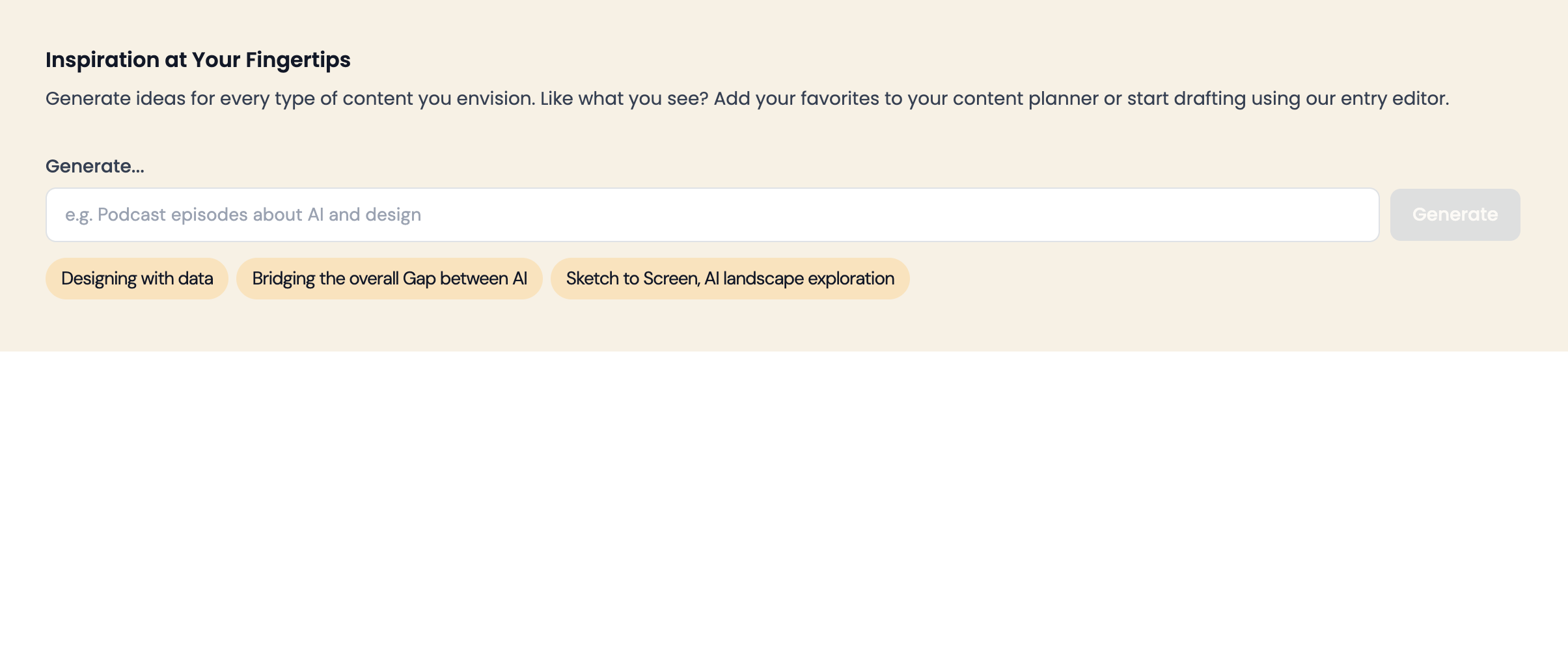
Imagine AI working behind the scenes to find hidden patterns, new opportunities, and what your audience really wants. With Vocable’s ideation tool as your creative partner, you’ll open the door to endless possibilities for your content marketing.
Get ready to stand out from the competition, connect with your audience, and take your content marketing to the next level. Let AI be your go-to tool for achieving amazing results effortlessly.
6. Conduct Surveys or Polls to Gather Insights
Want to understand your audience better? Surveys and polls are great tools for collecting feedback, opinions, and preferences. Platforms like SurveyMonkey and Google Forms make it simple to create and share surveys with your target audience.
Nike often uses surveys to learn more about their customers. They gather insights on preferences, opinions about product features, and overall satisfaction to improve their offerings and customer experience.
By collecting feedback through surveys, Nike makes smarter decisions about product development, marketing strategies, and improving customer experiences. This data helps them create content and campaigns that align with their audience’s needs and preferences.
7. Host a Webinar
Hosting a webinar is a great way to connect with your audience and share valuable insights. Whether it’s a one-time event or a series, webinars let you engage in real time, answer questions, and dive deep into a specific topic.
HubSpot, a top marketing software company, frequently hosts webinars on topics like inbound marketing, sales strategies, and customer experience. These sessions, led by industry experts, offer practical tips and actionable advice for attendees.
8. Create a Resource Hub on Your Website
Build a resource hub on your website to give your audience easy access to valuable materials. This hub can include e-books, guides, templates, and other educational content, creating a go-to spot for helpful resources.
Canva, the popular graphic design platform, does this well with its “Design School.” It’s a resource hub filled with tutorials, design ideas, and free templates to help users create amazing designs.
Canva’s resource hub not only offers tools for creating great designs but also teaches users about design principles and best practices.
This strategy has helped Canva become a go-to resource for both designers and non-designers, boosting user engagement and building strong brand loyalty.
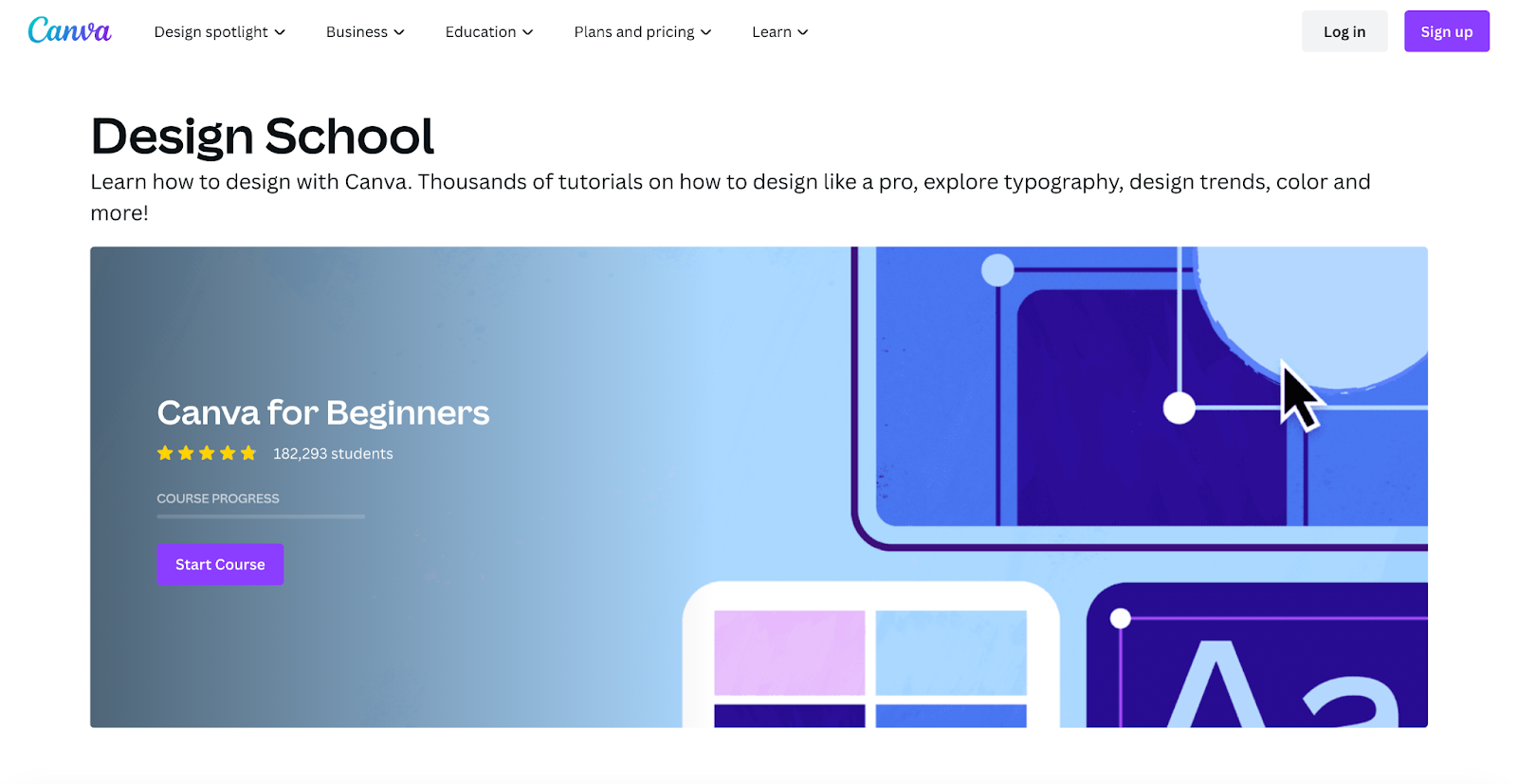
9. Share a Case Study
Use storytelling to share compelling case studies that show how your product or service makes a difference. But how? Well, you can:
- Show real examples of how you solve problems and deliver value.
- Take your audience through the background, the challenges your customers faced, the solutions you provided, and the results they achieved.
Airbnb is a great example of a company that uses case studies effectively. They showcase inspiring stories of hosts who turned their spaces into unique accommodations and achieved financial success. These stories highlight real-life transformations and the value of being an Airbnb host.
By sharing these stories, Airbnb highlights the earning potential for hosts while building trust with potential guests through real and positive experiences.
10. Conduct Interviews with Industry Experts
Interviewing industry experts is a powerful way to share valuable tips, insights, and unique perspectives with your audience.
Featuring well-known experts in your field helps position you as a reliable source of knowledge and builds trust with your audience.
Whether it’s through podcasts, videos, or articles, interviews give your audience access to exclusive insights that can inspire them and deepen their understanding.
One company that excels at conducting interviews with industry experts is TED. They host TED Talks, where renowned experts from various fields share their insights and experiences on stage.
TED features interviews and talks on diverse topics, offering viewers fresh ideas and perspectives. By curating these discussions, TED has become a globally trusted platform for sharing knowledge and expert insights.
11. Collaborate with Influencers for Co-Created Content
Grow your brand and connect with a larger audience by collaborating with influencers to create engaging, co-branded content.
Working with influential personalities in your industry opens up new opportunities and helps you achieve greater success together.
Nike really knows how to work with influencers. They team up with athletes and fitness influencers to create engaging content that clicks with their audience.
For example, they teamed up with LeBron James for a series of video ads and social media posts that really connected with fans and helped showcase their brand.
LeBron’s influence and Nike’s expertise came together to create content that really connected with basketball fans and showed off the brand’s commitment to sports excellence.
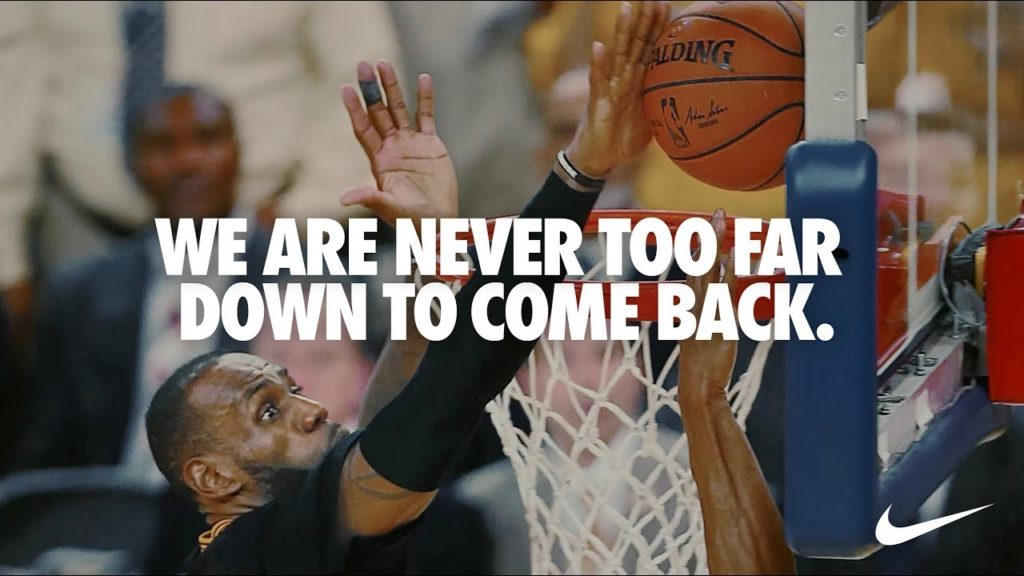
12. Create Interactive Quizzes or Assessments
Spark curiosity and keep your audience engaged with interactive quizzes and assessments. These tools grab attention while offering a fun and valuable experience.
Spotify is a great example of using interactive quizzes. They offer personalized experiences like “Discover Your Music Personality” or “Guess the Song.” These quizzes entertain users while providing tailored music recommendations based on their results.
Spotify’s quizzes are a fun way to keep users hooked. They get people to spend more time on the platform while helping them discover music that’s just right for them.
13. Listen to Your Audience
If you want your content to really click with your audience, you’ve got to understand them. Pay attention to what they need, what they like, and what they’re struggling with. Then, create content that speaks directly to them.
Vocable’s AI-powered keyword research tool takes your audience research to the next level. It helps you find the right keywords and topics to grab your audience’s attention and keep them interested.
This tool helps you discover what your audience really cares about, from trends to topics that grab their attention. With Vocable, you’ll find the right keywords to make your content a hit.
14. Launch a Branded Podcast
With the rising popularity of podcasts, maybe it’s time for you to check out what podcasting is all about.
A branded podcast is a podcast created by a company or brand to promote its message, values, or products while providing valuable content to its audience.
A great example of a successful branded podcast is “The GaryVee Audio Experience” by Gary Vaynerchuk, which connects with listeners in a big way.
In his podcast, Gary Vaynerchuk talks about entrepreneurship, marketing, and personal growth. His energetic style keeps listeners hooked while sharing practical advice and motivating them to take action.
The podcast helps Gary Vaynerchuk grow his brand, strengthen his personal image, and connect with his audience in a more personal way.
To launch your very own branded podcast, you can follow the steps below:
- Think about your brand and who you want to reach. Decide why you’re making the podcast—whether it’s to share tips, tell stories, or talk to your audience.
- Decide if you want interviews, solo talks, or stories. This will set the style for your podcast.
- Buy a good microphone and headphones. Clear sound is key for a good podcast.
- Think about what you’ll talk about in each episode. Keep it interesting and on topic for your audience.
- Make a catchy name, logo, and intro music. This helps people recognize your podcast.
- Find a quiet place to record. Edit your episodes to remove mistakes and add music if you want.
- Use a podcast hosting site to upload your episodes. Share it on Apple Podcasts, Spotify, and other platforms.
- Share your podcast on social media and your website. Ask people to follow and leave reviews.
- Respond to comments and questions from listeners. It helps build a community.
- Look at your podcast stats to see what works. Change things if needed to improve.
15. Write How-To Guides or Tutorials
Give your audience useful knowledge by creating clear and helpful how-to guides or tutorials.
Share step-by-step instructions, tips, and insights on a topic that matters to your audience. Offering actionable guidance helps you become a trusted resource and authority in your niche.
Adobe is a great example of a company that excels at creating how-to guides.
Their website offers a wide range of tutorials on using their software, covering topics like photo editing, graphic design, and video editing. These guides help users improve their skills and make the most of Adobe’s tools, providing real value and support.
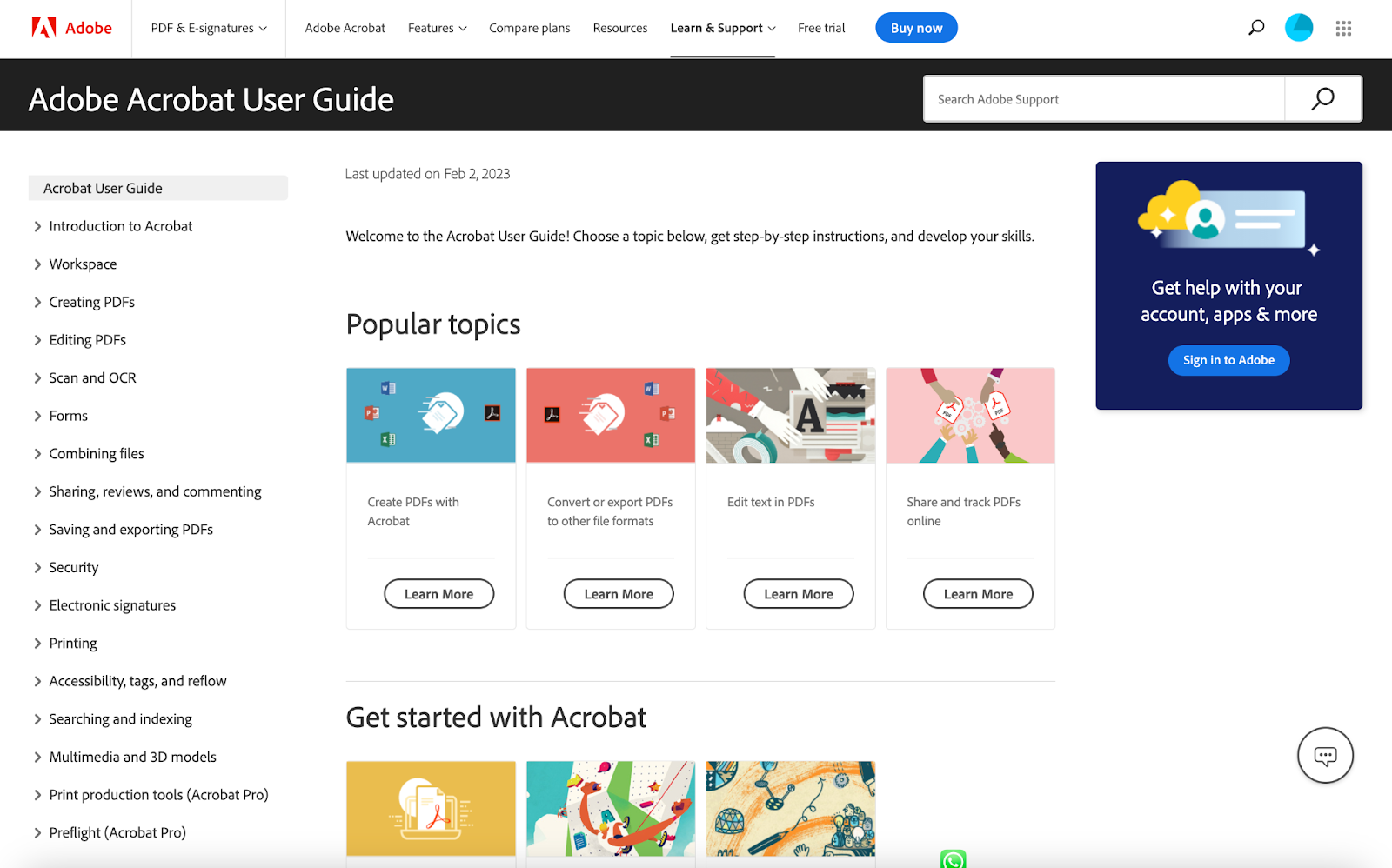
16. Engage in Guest Blogging on Relevant Websites
Guest blogging is a great way to reach more people and build credibility. Share your expertise, unique ideas, and valuable insights with a broader audience.
Look for trusted websites in your industry that welcome guest posts, and create high-quality, value-driven articles to share your expertise.
Buffer, a social media management platform, is a great example of a company that uses guest blogging effectively.
They regularly contribute guest articles to prominent marketing and entrepreneurship websites, sharing their expertise on topics such as social media strategy, content marketing, and productivity.
By guest blogging, Buffer reaches a larger audience, builds thought leadership, and drives traffic back to their website.
17. Create Infographics to Present Data or Concepts
You can make complex data and ideas easy to understand with eye-catching infographics.
Infographics grab attention and present information in a clear, engaging way. National Geographic is a great example of a company that uses infographics effectively.
These infographics combine beautiful imagery with concise text to convey complex concepts in an engaging and accessible way.
National Geographic’s infographics are widely shared on social media platforms and in their publications, helping them increase brand exposure and educate their audience.
18. Share Behind-the-Scenes Stories or Sneak Peeks
Give your audience a behind-the-scenes look at your brand to build connection and trust. Share stories and exclusive peeks into your company culture, product development, or team dynamics to show the authentic side of your business.
Patagonia, an outdoor clothing and gear company, for instance, shares behind-the-scenes stories through their “Worn Wear” campaign, highlighting the stories of well-loved and repaired Patagonia products.
Patagonia uses videos and blog posts to highlight their repair process, the stories behind their garments, and their commitment to sustainability. These stories resonate with eco-conscious customers while also demonstrating the durability and longevity of Patagonia products.

19. Organize Online Contests or Giveaways
Excite your audience by hosting online contests or giveaways. These fun events spark anticipation, encourage participation, and boost brand awareness.
You can try hosting a photo contest, caption challenge, or prize giveaway. Keep the rules clear, make it easy to enter, and offer exciting rewards.
Coca-Cola is a great example of a brand that runs successful online contests and giveaways. They often run social media campaigns where participants have the chance to win prizes by sharing their Coca-Cola experiences or submitting creative entries.
Coca-Cola’s contests inspire lots of user-generated content, create excitement on social media, and build a stronger connection with their audience.
20. Create Interactive and Engaging Social Media Posts
Create posts that truly engage your audience by swapping plain text updates for eye-catching visuals, fun videos, interactive polls, and engaging quizzes that spark real conversations.
Write captions that spark discussions, ask for opinions, and tap into emotions to keep conversations flowing in the comments.
Wendy’s, the fast-food chain, is a great example of a brand that nails interactive and engaging social media posts.
They are known for their witty and humorous X (Twitter) presence, engaging with their followers through clever responses and playful banter. Wendy’s posts often encourage audience participation, inviting followers to share their opinions or respond with funny comments.
By encouraging interactive conversations, Wendy’s has created a loyal and highly engaged social media community.

21. Publish In-Depth Whitepapers or Research Studies
Show off your expertise by creating in-depth whitepapers or research studies. Pick a topic, dig into the data, and share insights that offer something new.
IBM is a great example of a company that does this really well. They have a dedicated research division called IBM Research that conducts cutting-edge studies in various fields, such as artificial intelligence, cybersecurity, and quantum computing.
IBM Research shares whitepapers and research papers that push knowledge forward in their fields. By publishing these findings, IBM builds thought leadership and reinforces its reputation as a leader in technology and innovation.
22. Conduct Live Q&A Sessions or Ask Me Anything (AMA) Sessions
Start real conversations and connect directly with your audience through live Q&A or AMA sessions. These interactive events let your audience ask questions, get advice, and learn directly from your expertise.
Reddit, known for its community-driven discussions, hosts AMA sessions featuring celebrities, industry experts, and other notable figures, offering audiences a chance to engage directly and ask questions.
These sessions give Reddit users the opportunity to ask questions and receive direct responses from the featured guests. Reddit creates an environment where knowledge is shared, connections are made, and community engagement thrives.
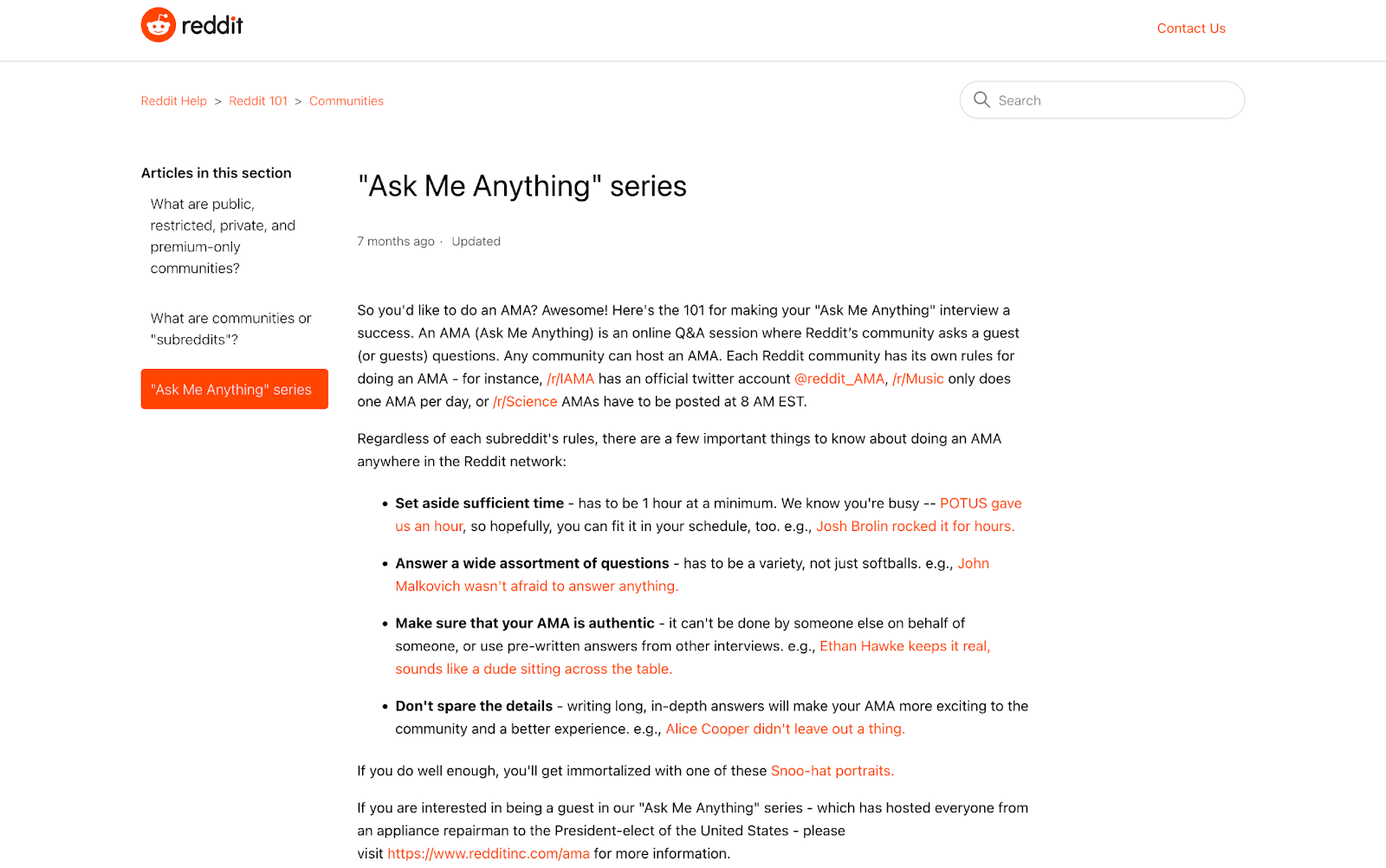
23. Develop a Comprehensive E-Book on Relevant Industry Insights
Create an e-book to share valuable industry insights and position yourself as an authority. Go deep into your niche, collect useful information, and present it in a clear, easy-to-read format.
Salesforce, a leading customer relationship management (CRM) platform, offers e-books on various topics related to sales, marketing, and customer service.
Their e-books provide valuable insights, best practices, and strategies for businesses looking to improve their sales and customer engagement. Topics range from lead generation and pipeline management to customer retention and personalized marketing.
Salesforce’s e-books serve as valuable resources for professionals in the sales and marketing industry, helping them stay updated on the latest trends and strategies.
24. Create Comparison Guides or Product Reviews
Help your audience make smarter choices with detailed comparison guides or product reviews. Whether you’re comparing tools, services, or products in your industry or sharing honest reviews, these resources become go-to references for your audience.
Wirecutter, a product review website owned by The New York Times, offers comprehensive product reviews across various categories, including home appliances, electronics, and lifestyle products.
Their reviews are known for their thorough research, rigorous testing, and unbiased assessments. Wirecutter provides detailed comparisons, highlighting the strengths and weaknesses of each product, and offers clear recommendations based on their findings.
Their trusted reviews help consumers navigate through a wide range of options and make confident purchasing decisions.
25. Practice Content Repurposing
Get more out of your content by repurposing it into new formats to reach different audiences. Turn blog posts, videos, or podcasts into infographics, slideshows, or e-books to expand your reach and keep your content fresh.
Repurposing your content gives it new life and helps you reach more people across different platforms. TED is a great example of this, as they share their inspirational talks in various formats, making their ideas accessible to a wider audience.
TED repurposes its live event talks into videos that are uploaded to its website and YouTube channel. These videos are then shared across social media platforms, reaching a global audience.
TED also repurposes its talks into podcasts, making the content accessible to people who prefer audio formats. By repurposing its content, TED extends its reach and impact, spreading ideas to diverse audiences.

Turn Your Content Marketing Ideas into Reality with Vocable
Execute your creative content marketing ideas with the support of Vocable’s AI-powered platform. Whether you’re a solopreneur, creator, or part of a team, our tools make it easy to ideate, plan, draft, and publish—all in one place.
- One workflow, all your tools: Plan, draft, and optimize your content without juggling multiple platforms.
- Automated publishing: Distribute your content effortlessly across CMS, social media, and other channels.
- AI-powered editor: Access multiple AI models to refine and perfect your content without interruptions.
- Save time and effort: Focus on creating great content while Vocable handles the rest.
Start your free trial or watch our demo today to see how Vocable can transform your content marketing.
FAQs About Content Marketing Ideas
What are the 5 P’s of content marketing?
The 5 P’s are plan, produce, publish, promote, and perfect. First, you need a solid plan that outlines your goals, your audience, and your strategy. Then, create high-quality content that speaks to your audience’s needs. Publishing your content at the right time and on the right platforms makes sure it reaches the right people. Promotion is about sharing your content through social media, email, or other channels to get it noticed. Finally, perfect your content by checking how it’s performing and making improvements to keep it fresh and effective.
What is content marketing with examples?
Content marketing is all about creating and sharing valuable content to attract and keep your audience while driving action. For instance, a company might write a blog series with tips on how to use their products or create videos that solve common customer problems. One of the most popular content marketing ideas is running a campaign with guides, quizzes, and social media posts to get people engaged and boost brand awareness.
What are the 3 C’s of content marketing?
The 3 C’s are content, consistency, and connection. Content is what you create—things like blogs, videos, or infographics—and it should always provide real value. Consistency is about showing up regularly with content that feels on-brand and reliable. Connection happens when you engage with your audience, answer their questions, and build relationships that keep them coming back.
What type of content is most successful?
The best content is the kind that speaks to your audience and gives them something useful. It could be blog posts, videos, infographics, or even social media updates that solve problems, answer questions, or just entertain. Success depends on how well the content fits the platform and how it encourages your audience to engage, like leaving a comment or sharing it with others.
How do I do content marketing?
Content marketing starts with knowing your audience and what they care about. Then, make a plan that lays out your goals, the type of content you’ll create, and where you’ll share it. Focus on making content that’s high-quality and consistent, whether it’s a blog, video, or social post. Keep an eye on how your content is doing, make changes if needed, and always aim to provide value that keeps your audience interested.
Get Started with Vocable
Master every aspect of Vocable, from automated content planning to publishing in these step-by-step tutorials and product guides.
Get Started Now
